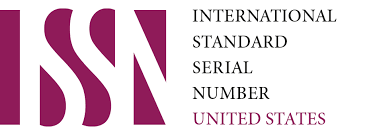Advancing English Reading Proficiency
DOI:
https://doi.org/10.62480/tjpch.2024.vol28.pp30-34Keywords:
English, reading, findings, developmentAbstract
Reading comprehension, in its proper context, is fundamental to the acquisition of knowledge, which is the basis not only for performing well in exams but also for research in all disciplines of higher education. In order to study the improvement of reading skills in English, an experiment was conducted with first years students from the following three higher educational institutions in Samarkand: 1. Samarkand State University (SamSU), 2. Samarkand-Finland Institute of Pedagogy (SamFIP), and 3. Samarkand State Institute of Foreign Languages (SamSIFL). Control groups and experimental groups were separately identified in each of the institutions based on a rough similarity of academic backgrounds of participating students. The initial data was collected in the following semesters: from SamSU in the session that began in March of 2021, from SamFIP in the session beginning in September 2021, and from SamSIFL in the session that commences in March 2022. While the control groups consisted of 29 students in SamSU, 30 in SamFIP, and 18 in SamIFL, the experimental groups consisted of 26 students in SamSU, 30 in SamFIP, and 18 in SamIFL. Right in the beginning of their respective semesters a reading-based proficiency test was administered to both the control and experimental groups simultaneously. For a semester, efforts were made to improve the reading skills of students with the help of a specially prepared manual. At the end of their respective semesters the control groups and the experimental groups were again tested by administering a relatively higher-level reading-based test. The findings reveal that a careful focus on the development of reading skills among the students leads to a much better academic performance. The experimental data and the findings will be presented in the conference
References
Arsenault, N. and Anderson, G. (1998) Fundamentals of Educational Research. 2nd ed. London: Routledge Flamer.
Bradley, C. (1997) Qualitative vs. Qualitative research Methods. In: Y. Carter and C. Thomas, (eds.) Research Methods in Primary Care. Oxon: Radcliffe Medical Press.
Bryman, A. (2012) Social Research Methods. 4th ed. Oxford: Oxford University Press.
Flick, U. (2002) An introduction to qualitative research. London: Sage.
Lavraka, J. and Roller, M. (2015) Applied Qualitative Research Design: A Total Quality Framework Approach. New York: The Guilford Press.
Rossman, G. and Rallis, S. (2003) Learning in the Field: An Introduction to Qualitative Research. London: SAGE.
Wiebel, W. (1990) Identifying and Gaining Access to Hidden Populations’. In: E. Lambert, (ed.) The Collection and Interpretation of Data from Hidden Populations. Washington: National Institute on Drug Abuse Monograph 98.
https://www.questionpro.com/blog/what-is-a-questionnaire/-2021.6.12 11:00
https://www.surveymonkey.com/mp/quantitative-vs-qualitative-research/ 2021.6.12 16:00
Downloads
Published
Issue
Section
License

This work is licensed under a Creative Commons Attribution-NonCommercial 4.0 International License.
User Rights
Under the Creative Commons Attribution-NonCommercial 4.0 International (CC-BY-NC), the author (s) and users are free to share (copy, distribute and transmit the contribution).
Rights of Authors
Authors retain the following rights:
1. Copyright and other proprietary rights relating to the article, such as patent rights,
2. the right to use the substance of the article in future works, including lectures and books,
3. the right to reproduce the article for own purposes, provided the copies are not offered for sale,
4. the right to self-archive the article.












